Great Powers and Hot Spots
General framework
The collapse of Soviet Union (1990) moved the world system from the bipolarity to the new world order based on the unipolarity, the US-led unilateral world order with market economy and liberal hegemon. The first post-Cold War decennium was characterized by optimism, hopes, values and views of the better and safer future, at least among Western countries.
Historian Francis Fukuyama wrote an article: End of History in the National Interest 1989 (which later was published in the form of the book: End of History and The Last Man, 1993). Fukuyama’s main themes were that after the Cold War, the ideological development is ending, market economy and democracy based on Western liberal values will become as global societal order.
In 1993, as a reply to Fukuyama, Samuel Huntington wrote an article in Foreign Affairs (Summer 1993): Clash of Civilizations. According to Huntington, the ideological confrontations may step donw aside but instead come cultural and religious value contradictions, which cause clashes between civilizations.
There have been much discussions and argumentation, both among scientists and scholars as well as in public media that the world moved from hard geopolitical and power politics to soft power world.
Now, it is clear that Fukuyama’s end of history lasted 20 years and ended by Putin’s prophetic speech in Munich 2007, which started an era of turbulence and slow transformation process accelerating and culminating in 2022 Ukraine crisis.
Huntington’s clash of civilizations did not take place either as such but something much bigger is now emerging, a clash of “two world camps”.
In this framework of great powers, numerous processes, both external and internal, began to transform “the minds and people” around the world. The humanity seems to be divided in two camps:
The Western Camp, “Axis of US Empire” (the US and its allies Canada, EU and other West Europe, Australia, New Zealand, Japan, South Korea) and
The Eastern Camp, “Axis of Resistance” led by China and Russia and their close allies Iran and North Korea, CIS and CSTO countries, covering majority of Asia, Africa and South America, so called “Global South”.
The eastern group consists of the majority of humanity, both in terms of countries and people. The ratio is six billion people in the east and to one billion in the west. No doubt, which camp will prevail. The leadership will shift to the east and remain there well into the next century.
Alliance development in the Eastern Camp
There are many progressing “important entities” within the Eastern Camp:
BRICS: Brazil, Russia, India, China, South Africa (original member states); since 1.1.2024 five new member states Egypt, Iran, UAE, Saudi Arabia, and Ethiopia (BRICS 10); more members in 2025
SCO (Shanghai Cooperation Organization): initially, Russia, Kazakhstan, Kyrgyzstan, China, Tajikistan and Uzbekistan, in 2017 they were joined by India and Pakistan. Iran became a full-fledged member in July 2023. Belarus was accepted to join the group in July 2024.BRI (Belt and Road Initiative), Chinese initiative, which was announced by President Xi Jinping in 2013, aims to boost connectivity and cooperation between East Asia, Europe and East Africa. China expands the use of the Chinese currency (renminbi / yuan) in countries and regions related to the Belt and Road Initiative by improving cross-border payment and settlement facilities for the currency. The investment program of BRI over 1$ trillion. The Asian Infrastructure Investment Bank (AIIB) is a multilateral development bank that aims to support the building of infrastructure in the Asia-Pacific region.
EAEU (Eurasian Economic Union), member states include Armenia, Belarus, Kazakhstan, Kyrgyzstan and Russia. The key objectives of the political and economic organization are to increase cooperation and economic competitiveness for the member states and the promotion of stable development in order to raise the standard of living in member states.
Great Eurasian Partnership: Both Chinese President Xi Jinping and Russian President Vladimir Putin have openly discussed the possibility of uniting Eurasia and developing something wholly new entity, known as the Great Eurasian Partnership. This concept brings together the members of the Eurasian Economic Union (EAEU), Shanghai Cooperation Organization (SCO), and ASEAN as a huge free trade bloc.
I have examined this “international system” issue in many articles on my website, here links to some of them:
February 28, 2022 | Seppo Niemi
World order and polarity transforming 2022
March 21, 2022 | Seppo Niemi
Cyclical transformation turning into doomsday
April 2, 2022 | Seppo Niemi
Three key hot spots
Currently, the key hot spots are Ukraine, the regions surrounding Israel in the Middle East as well the strategic space between and around Taiwan and mainland China. All three conflicts could not only expand within their respective theaters but can also escalate into international conflagration. All three involve major nuclear powers.
There are a lot of other potentially tense regions, which may turn into internationally important hot spots. Among them are for example a still open and unsolved issue of Korea Peninsula, a multidimensional Eurasian “Chessboard” á la Zbikniew Brzeziski, Sahel – “French” Africa and growing Russian influence, Venezuela – world’s oil reserve andgreat interests of each current great power, just to mention some of the prominent ones.
Hot spot 1: Ukraine and European Security
The root cause of this problem is NATO’s eastern expansion and the unwillingness and inability of the great powers and Europe to agree on a European security arrangement. I refer here to some previous articles on my website, which are presented here below as the list of links.
It appears that the western Europe & the US are not willing to find any peaceful solution to the present crisis; this is easily detectable in my articles of January 19, 2022; an article of December 28, 2022; November 22, 2023; January 5, 2024; June 18, 2024.
AFU made a surprising attempt of Kursk intrusion in the early August, which has now turned out to be a complete fiasco. The whole attempt has stalled and Russia has started again a “meat grinder” measures. By the end of August, AFU has suffered over 8,000 soldiers’ losses, among them a lot of foreign mercenaries, as well as massive material losses (over 700 tanks/IFV/APC, 60 artillery guns and about 20 MLRS). Even General Syrskyi, Chief Command of AFU, has admitted the operation as a failure. In numerous other places of the frontline, AFU’s positions are collapsing.
Especially humiliating, from the NATO perspective, is that the whole plan of AFU Kursk intrusion has been based on false and flawed intelligence, supplied to AFU by American and British military authorities.

Rus Advance Causes Pokrovsk Collapse; Syrsky Admits Kursk Failure, Wants Pullout, Zelensky Says No
by Alexander Mercouris August 29, 2024
The latest military analyses tell harsh language about the chaotic situation of AFU on the frontlines and massive AFU losses, monthly troops losses exceeding 50,000 soldiers in each three summer months (June, July, August).

The Heat🔥Kursk – Strategic Mistake⚔️Everything Is Collapsing In Donbass💥 Military Summary 2024.08.30
Halytsynivka Has Fallen⚔️ 72nd Brigade Lost Its Combat Capabilities💥 Military Summary For 2024.08.31
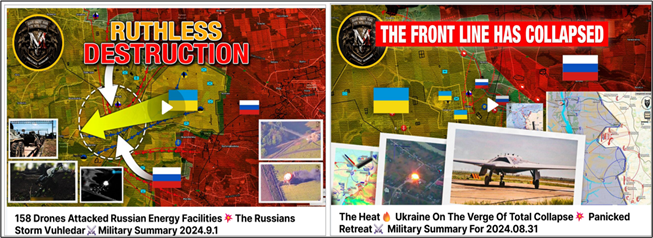
The Heat🔥 Ukraine On The Verge Of Total Collapse💥 Panicked Retreat⚔️ Military Summary For 2024.08.31 158 Drones Attacked Russian Energy Facilities💥The Russians Storm Vuhledar⚔️Military Summary 2024.9.1
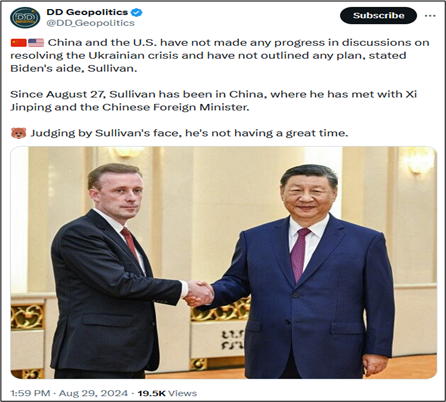
List of links to the articles on my website:
Based on my own previous assessments and the above presented information, my conclusion is quite clear: Russian SMO (Special Military Operation) in Ukraine will end with a Russian victory before the turn of the year and it is up to the NATO, whether the war continues and perhaps escalates into WWIII. (See my detailed articleof April1, 2024)
Hot spot 2: Gaza and the Middle East
The turbulence is resuming in this region: Israel – Palestine – Gaza – Hamas & Hizbollah – Iran – Houthis & other jihadist groups etc. are regularly in the headlines of the media. The war between IDF and Hamas continues in Gaza as well rocket exchange between IDF and Hizbollah, Houthis make new strikes targeting ships on Red Sea, the US Navy is revenging by striking on Yemen; Business as usual.
After assassination of Ismail Haniyeh, the world is waiting for the big explosion but so far particularly Iran has shown notable self-restraint and refrained from any large-scale revenge strikes. Partly, Iranian restraint may also be due to American significant military concentration in the region. Anyway, this region has been and still is the key powder keg in the world and may explode anytime.
Some interesting details:
- air strikes by Houthis have forced the US Navy groups to withdraw from Red Sea concentrating their forces on Eastern Mediterranean and Gulf of Oman
- Yemen has shot down 4th expensive MQ-9 Reaper UAV, the US is worried about growing power of Yemen these days
- Russia has sent to Iran military equipment (S-400 air defense systems and electronic warfare systems) with Russian military experts and other personnel
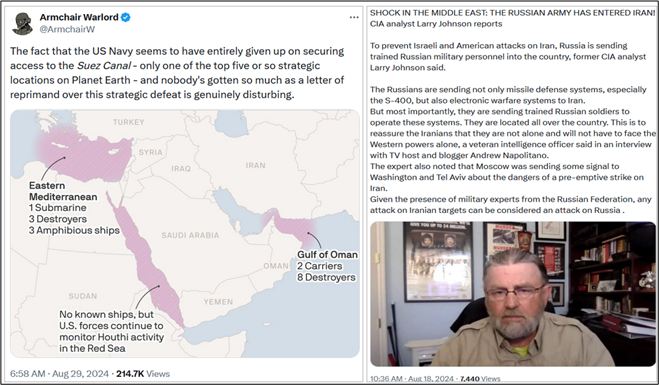
The Middle East and its people nervously await retaliatory measures against the recent operations of the Israeli Prime Minister. There are growing fears that the reaction will be larger in scale this time around in comparison to the one in April. Questions vis-à-vis the scale of the new confrontation are being posed. Which role will pro-Iranian Iraqi groups play? What about the Houthis and the Syrian front? Will Netanyahu respond to the Iranian strike, will the battle spill over into Lebanon or will he first carry out a preventative strike on Iran? There are more questions than answers.
For decades the Middle East has been on the brink of war; war being the usual state instead of peace. However, recent pictures and videos of battle are unprecedented and this summer killings and mutual strikes are becoming hotter and hotter. What are the limits of Israeli influence in the region? What are the limits of Iranian capabilities? The US groups and bases stand ready on high alert but cannot do anything really impactful.
The rival Hamas and Fatah, as well as other 12 Palestinian groups, have signed an agreement on “ending division and strengthening Palestinian unity” in Beijing. Fourteen Palestinian organizations have signed the Beijing Declaration on forming a unity government in the Gaza Strip and West Bank in the aftermath of the China-brokered talks, which took place on July 21-23.
Over the years Fatah and Hamas had already signed several agreements to build some unity government. All however have failed. What gives hope is that this agreement might be sustained is the participation of all other Palestinian groups as well as the significance of China as the guarantee power behind this.
The Chinese foreign ministry said the agreement was a first step to promote a “comprehensive, durable and sustainable ceasefire” in the Gaza Strip that would eventually lead to Palestine being admitted to the United Nations as a fully-fledged member and becoming an independent state.
This implies that Hamas, as well as all other groups, have agreed to a two-state solution – the aim the United Nations has agreed upon. Under the deal the rival groups had agreed to set up an “interim national reconciliation government” to govern post-war Gaza.
The west will of course at first reject the whole process and result because it had no part in creating it. But last year’s agreement between Saudi Arabia and Iran, also brokered by China, has held far beyond the low expectations put into it.


I have examined the conflicts in the Middle East in many articles on my website, here links to some of them:
November 8, 2023 | Seppo Niemi
Israel vs. Hamas war, in the context of great powers
December 31, 2023 | Seppo Niemi
Middle East is at the verge of volcano-burst
April 12, 2024 | Seppo Niemi
Variety of wars in the Middle East
Based on my own previous assessments and the above presented information, my conclusion is quite clear: within next 2-4 years, a big war is unavoidable in the Middle East.
Hot spot 3: Taiwan – South China Sea
China is patient with Taiwan but China’s stance is clear:
China wants to realize the reunification of the Taiwan island with the motherland through peaceful means, by following the “one country, two systems” principle. But “Taiwan independence” forces on the island have been opposing this with the help of some countries and by “internationalizing the Taiwan question”. This has compelled Beijing to reiterate its position that it does not “renounce the use of force” to achieve the goal of national reunification.
Chinese Global Times wrote on July 20: On July 18, the European Parliament convened a plenary session in Strasbourg, during which Ursula von der Leyen was re-elected as president of the European Commission. However, China’s focus has been on her declaration before the European Parliament vote that if re-elected, she will seek “to deter China from unilaterally changing the status quo by military means, particularly over Taiwan.” Whether her provocative statement will become reality remains to be seen. It must be pointed out that von der Leyen’s absurd remarks regarding China’s internal affairs constitute blatant interference, which not only damages the credibility of the EU in international affairs, but also has a negative impact on China-EU relations, as well as the peace and stability in the Asia-Pacific region, and even the world.
Various incidents and skirmishes between Philippines forces and China’s Navy have taken place regularly in the South China Sea, due to regional disputes and disagreement of demarcation. China has stepped up its harassment of Philippine forces and its rhetoric. It has also upped its intrusions into Taiwanese airspace and waters, while cementing strategic partnerships with Russia and Iran. Yet for now, China is not especially eager to attack Taiwan, given that it feels it is steadily gaining momentum in psychologically, strategically, and politically strangling the Taiwanese.
According to the Chinese authorities, The China Coast Guard (CCG) has taken legitimate, restrictive measures on Philippine Coast Guard ships when they consecutively intruded into waters adjacent to two Chinese reefs in the South China Sea, with experts slamming the Philippine’ dangerous moves of brinkmanship that violate China’s territorial sovereignty. The Philippines repeatedly made provocations and stirred up troubles, violated the temporary arrangement reached by the two sides and seriously violated China’s sovereignty, and severely sabotaged peace and stability in the region.
Interesting development taking place in two strategic regions, as written below:
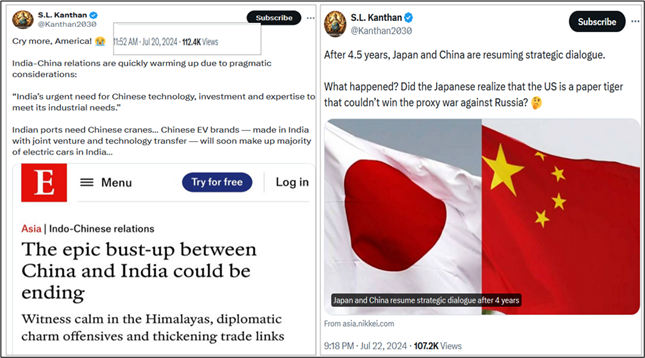
China heavily criticized NATO and certain countries as troublemakers at the UN Security Council open debate, on July 17, after the US-led military alliance accused China of being a “decisive enabler” of the Russia-Ukraine conflict earlier this month.
Chinese Ambassador to the UN Fu Cong said that hopes for peace remain fragile because Washington and NATO will keep making trouble to extend the conflict, and this situation requires China and all relevant parties to make more efforts to promote political settlement. History has amply proved that wherever NATO’s hand extends, turmoil and chaos will ensue. China hereby advises NATO and certain countries to stop being the troublemakers. Chinese experts said that NATO expansion is one of the key reasons that provoked the Russia-Ukraine conflict, and now NATO is trying to use the war to further legitimize its expansion, not only in Europe but also around the globe, especially in the Asian-Pacific region.

I have examined this conflict in many articles on my website, here links to some of them:
Taiwan case, updated Big Picture
November 29, 2023 | Seppo Niemi
China – US relations after APEC Summit in San Francisco
February 20, 2024 | Seppo Niemi
Hot spots and topics worldwide, China
Based on my own previous assessments and the above presented information, my conclusion is quite clear: the final schedule of reunification is the year 2049 (“new “ China 100 years); peaceful, gradual process of reunification seems to be probable but external factors may turn this process such that China is ready to use force.
Triangle game of great powers – taking new rounds
I have a detailed theoretical study of this topic on my website, for those who are interested in theoretical formulations of great power relations, link here below:https://greatpowerrelations.com/triangle-game/ .
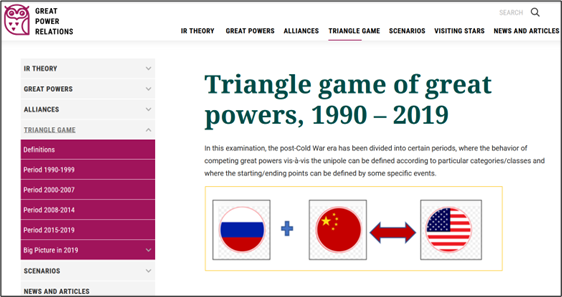
My contribution to the study of IR may be here: Periodical systemic classification of the post-Cold War era. The theoretical framework for this section’s analysis has been presented in sections of Issue of polarity and Alliance formation. The empirical material and reality events of great power game can be found in sections of Great Powers and Alliances. Based on theoretical framework and empirical material, the following four-period classification can be found and defined. Each period can be characterized by certain behaviors of competing great powers and the starting/ending points of each period can be specified.
- Period 1990 – 1999: deep unipolarity, bandwagoning
- Period 2000 – 2007: unipolarity, awakening of competitors
- Period 2008 – 2014: declining unipolarity, soft balancing
- Period 2014 – 2019: transforming of polarity, hard balancing
The video below is a top-level presentation of three prominent experts discussing on two cases in the framework of international relations.
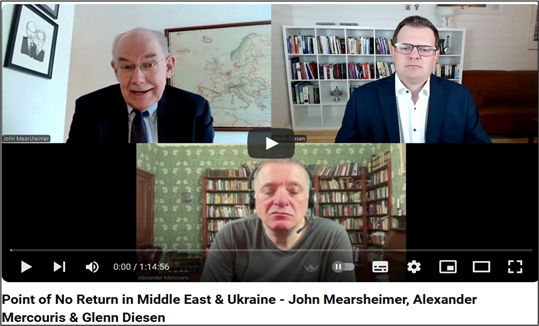
Point of No Return in Middle East & Ukraine – John Mearsheimer, Alexander Mercouris & Glenn Diesen
by The Duran August 30, 2024
I have examined this topic in many articles on my website, here links to some of them:
June 1, 2021 | Seppo Niemi
Strategic and military balance of great powers in Spring 2021
July 13, 2022 | Seppo Niemi
Ukraine and Taiwan on Brzezinski’s Grand Chessboard
December 10, 2023 | Seppo Niemi
Glimpses in economic dimension of current great power competition
March 10, 2024 | Seppo Niemi
NATO’s involvement in Ukrainian war – “Grande Finale” approaching
March 23, 2024 | Seppo Niemi
War in Ukraine: Military SitRep, recent NATO buildup and French campaign
April 26, 2024 | Seppo Niemi
Economic positions of great powers in Spring 2024
May 28, 2024 | Seppo Niemi
From Grand Finale of Ukraine war to Final Countdown of Humanity
China-Russia cooperation
A part of the above mentioned “triangle game of great powers” is China-Russia cooperation. I have a large study of this topic, the link here https://greatpowerrelations.com/alliances/present-alliance/ .
Theoretical framework of China-Russia cooperation can be found in the concepts like strategic convergence, threat-interest model, balancing of threat and alliance formation principles (see Stephen Walt). Since the establishment of Sino-Russian diplomatic relations in 1992, after the collapse of the Soviet Union, the two countries have officially established the coequal partnership policy.
The elevation of the partnership between China and Russia indicates ever-closer cooperation in bilateral relations in the post-Cold War era. In order to streamline the conditions of partnership evolution, the Sino-Russian relations can be divided into seven consecutive phases thus far:
- the transition period, 1990-1993, from the collapse of Soviet Union to “reborn” Russia
- the 1994 simple partnership, when “constructive partnership” was set up,
- the 1996 the security partnership, when China and Russia established a strategic partnership after Primakov became the Foreign Minister of Russia
- the 2001–2004 economic partnership, whenthe Treaty of Good Neighborliness and Friendly Cooperation were signed
- the 2010 full partnership, when China and Russia upgraded their partnership to a comprehensive strategic partnership, when Putin’s Edicts 2012 redirected Russia’s focus
- the 2014 upgraded full partnership, when the New Comprehensive Strategic Partnership agreement was signed by Putin and Xi
- the 2019, decision by Putin and Xi to upgrade their relations to a comprehensive strategic partnership of coordination for a new era
Here below, a recent expert comment on this topic:

Russia and China: Beyond A political marriage of convenience|Glenn Diesen
Thinkers Forum, August 18, 2024
Chinese Premier Li Qiang met his colleague Russian Prime Minister Mikhail Mishustin in Moscow, in late August, and said China is ready to work with Russia to strengthen all-round practical cooperation between the two countries and push the China-Russia comprehensive strategic partnership of coordination for a new era to a new level. After the meeting, the two leaders signed a joint communique of the 29th regular meeting between Chinese and Russian heads of government and a new version of the outline of the China-Russia investment cooperation plan.
A key characteristic of the China-Russia comprehensive strategic partnership of coordination for the new era is the comprehensive communication mechanism that covers almost all governmental sectors and departments in all fields, including also the military affairs. The recent visit of Chinese military delegation in Moscow was an important proof of this.
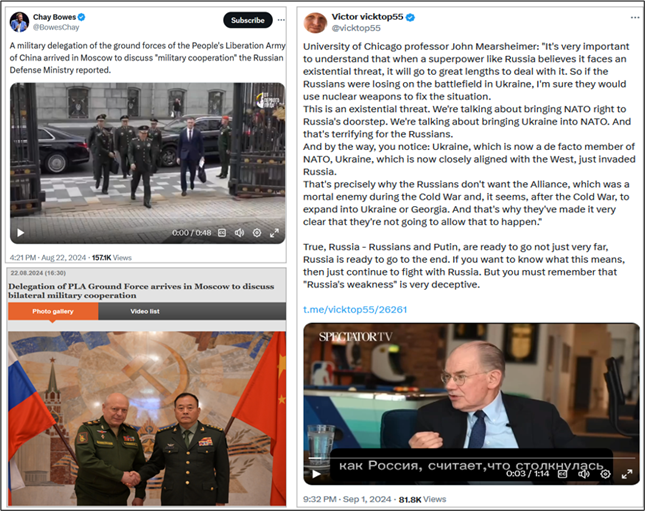
I have examined this topic in many articles on my website, here links to some of them:
March 26, 2023 | Seppo Niemi
Putin and Xi – allies in the spirit of multipolarity
October 22, 2023 | Seppo Niemi
Great power relations in the context of the third BRI Forum
May 22, 2024 | Seppo Niemi
Putin’s state visit to China, May 16-17, 2024
Based on my own previous assessments and the above presented information, my conclusion is quite clear: China-Russia cooperation will be a key factor in the triangle game of great powers in this century, leading the East Camp in competition with the West.
Epilogue
ALL WHICH CAN BE SHAKEN WILL SHAKE!!!
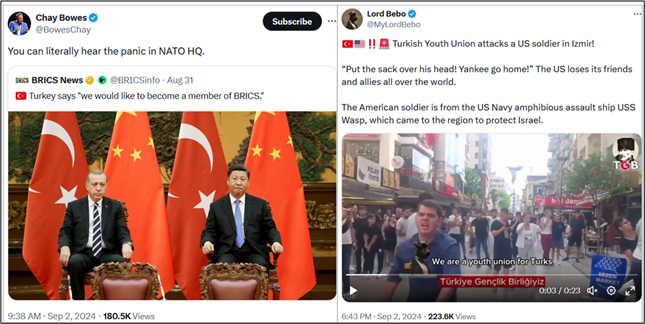
Parliamentary elections in numerous European countries are “promising” the time of great turbulence in Europe as well in America. The UK is becoming a first Muslim caliphate in Europe, internal riots in many other European countries due to migration problems, the EU and NATO are facing fatal troubles. Political tectonics are now moving with staggering and breathtaking speed.
ANYTHING CAN HAPPEN NOW.


